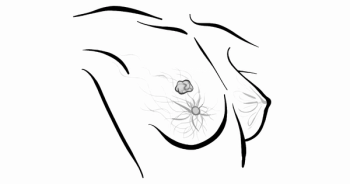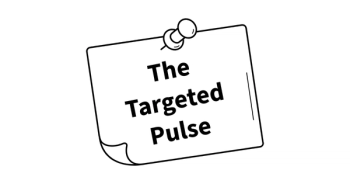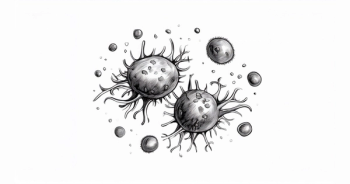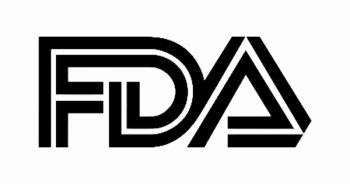
Targeted Therapies in Oncology
- June II 2025
- Volume 14
- Issue 8
- Pages: 14
Bladder-Sparing Approaches Gaining Ground in NMIBC
Innovative treatments for non–muscle-invasive bladder cancer emerge, focusing on bladder preservation and improved outcomes with novel therapies and active surveillance strategies.
Emerging approaches in non–muscle-invasive bladder cancer (NMIBC) were showcased throughout the 2025 American Urological Association Annual Meeting, with agents such as sasanlimab, TAR-200, and UGN102 delivering promising outcomes. In low-, intermediate-, and high-risk settings, novel treatments were explored that sought to preserve the bladder and leverage immune checkpoint inhibitors, unique intravesical delivery systems, or even de-escalate treatment through active surveillance and adjuvant therapies. The focus on enhancing therapeutic effects while minimizing systemic adverse events continues to be a strategy among investigators.
ENVISION Trial
The single-arm phase 3 ENVISION trial (NCT05243550) evaluated UGN-102, an intravesical mitomycin thermal gel, in patients with recurrent low-grade, intermediate-risk NMIBC. Updated findings revealed a clinically meaningful complete response (CR) rate with sustained durability.1
Although the findings were promising, the FDA’s Oncologic Drugs Advisory Committee (ODAC) voted against the therapy’s risk-benefit profile.2 ODAC voted 5 to 4 against UGN-102 because the overall benefit-risk of the therapy is not favorable in patients with recurrent low-grade, intermediate-risk NMIBC. The FDA expressed significant concerns about the robustness of the data supporting UGN-102’s efficacy and safety.
Earlier data had reported a 79.6% (95% CI, 73.9%-84.5%) CR rate among those who received UGN102 (n = 191/240).3 The current study showed that responders had an 80.6% (95% CI, 74.0%-85.7%) probability of remaining disease-free at 18 months.1
“This is very unusual. I think the most notable aspect of this study is that we’re seeing durability of response that exceeds what we typically know for TURBT [transurethral resection of bladder tumor], and this makes sense based on the treatment. When we do TURBT, we have to resect what we can see, and we know…we have limitations in how well we do [this],” Sandip M. Prasad, MD, MPhil, of Morristown Medical Center/Atlantic Health System in New Jersey, said in a presentation of the data.
"The gel coats the entirety of the urinary lining, and some of the recurrences that we probably see at 3, 6, or 9 months are just tiny tumors we didn’t see initially. But the gel would treat those, because you don’t have to see anything; it coats every part of it. Therefore, the durability makes sense from the mechanism of how this drug works,” Prasad said.
Low-grade, intermediate-risk NMIBC is a highly recurrent, persistent cancer that recurs despite treatment with TURBT, the current standard of care.
“TURBT, with or without adjuvant treatment, remains inadequate treatment for this,” Prasad said. He explained that when UGN-102 is placed on ice, it becomes a liquid and can subsequently be instilled into the body. Once it reaches body temperature, it will form a gel that coats the entire lining of the urinary surface. “It will maintain contact time for up to 6 hours; really, that’s the secret sauce of this agent, and the active chemical is mitomycin.”
Trial Details
The multinational study enrolled patients with low-grade, intermediate-risk NMIBC (multifocal tumors, solitary tumors greater than 3 cm, or frequent recurrence).4 Most tumors were multifocal (83%), with a mean size of 2.5 cm. Nearly all patients (95%) completed 6 weekly instillations.1
“When we asked investigators on the study, ‘How would you typically manage these types of tumors?’...most…responded that these patients would be managed by TURBT, and I would generally agree for larger, multifocal tumors,” he said. In the study, 95% of patients (n = 240) received all 6 once-weekly intravesical instillations. He added that for the 5% of patients who did not receive all 6 doses, most received 5.
The primary end point was CR at the 3-month visit, with those who achieved CR entering the follow-up period. Those who did not achieve a CR were offered standard of care. The key secondary end point was duration of response (DOR), and safety outcomes were also examined.
Safety data showed 57.1% experienced treatment-emergent adverse events (TEAEs), mostly grade 1/2. Common TEAEs included dysuria (18.3% grade 1), hematuria (6.3% grade 1), and urinary tract infection (4.2% grade 2). Serious AEs were rare, with only 2 treatment-related cases (urethral stenosis and urinary retention). “Grade 3, 4, and 5 AEs were extraordinarily uncommon,” Prasad said. Two patients experienced any treatment-related serious AEs: one experienced urethral stenosis and one experienced urinary retention.
SunRISe-1
Findings from the phase 2b SunRISe-1 study (NCT04640623) of the intravesical device TAR-200 showed the highest single-agent CR rate reported to date in patients with Bacillus Calmette–Guérin (BCG)-unresponsive, high-risk NMIBC with carcinoma in situ (CIS) with or without papillary disease.5
Data from cohort 2 (n = 85) showed that patients with BCG-unresponsive, high-risk NMIBC with CIS with or without papillary disease who received TAR-200 achieved an overall CR rate of 82.4% (95% CI, 72.6%-89.8%). The 12-month CR rate was 45.9%. The Kaplan-Meier–estimated 12- and 24-month CR rates were 52.4% (95% CI, 40.7%-62.8%) and 44.7% (95% CI, 33.1%-55.7%), respectively. The median time to onset of CR was 2.8 months (range, 2.1-8.3), and 95.7% (n = 67/70) of patients achieved a CR within the first 3 months. The CR rate was consistent across patient subgroups.
“The standard of care for [patients with] BCG-unresponsive, high-risk NMIBC is radical cystectomy,” Joseph Jacob, MD, MCR, an associate professor of urology at Upstate University Hospital in Syracuse, New York, said during the presentation. “Radical cystectomy is a life-changing operation with considerable morbidity and up to an 8% 90-day mortality rate. Unfortunately, many patients are unable or unwilling to undergo radical cystectomy. There are limited FDA-approved treatment options in patients with BCG-unresponsive, high-risk NMIBC.”
TAR-200 is a novel drug-releasing system that employs an intravesical drug-releasing application, which provides sustained delivery of gemcitabine in the bladder. In December 2023, TAR-200 received breakthrough therapy designation from the FDA for the treatment of adult patients with BCG-unresponsive, high-risk NMIBC who are ineligible for or have declined radical cystectomy.6
Then, in January 2025, a new drug application (NDA) was submitted to the FDA seeking the approval of the agent for the treatment of patients with BCG-unresponsive, high-risk NMIBC with CIS, regardless of the presence of papillary tumors.7
Design of SunRISe-1
Cohorts 1, 2, and 3 of SunRISe-1 enrolled adult patients with histologically confirmed high-risk NMIBC with CIS with or without papillary disease with an ECOG performance status of 2 or less.1
Patients were also required to have persistent or recurrent disease within 12 months of completion of BCG therapy and be unresponsive to BCG therapy with no plans to undergo a radical cystectomy.
Cohort 4 consisted of patients with papillary-only high-risk NMIBC without CIS. In cohort 1, patients received TAR-200 in combination with cetrelimab, and those in cohorts 2 and 3 received TAR-200 or cetrelimab monotherapy, respectively. Patients in cohort 4 also received TAR-200 monotherapy. TAR-200 was administered once every 3 weeks for the first 24 weeks, then every 12 weeks through week 96 of treatment.
At baseline, the median age in cohort 2 was 71.0 years (range, 40-88), and had an ECOG performance status of 0 (91.8%). Most patients were men (80.0%), White (87.1%), and former nicotine users (58.8%). The median number of prior doses of BCG was 12 (range, 7-42).
CREST Study
Treatment with the anti–PD-1 monoclonal antibody sasanlimab in combination with BCG induction and maintenance therapy resulted in significant improvements in event-free survival (EFS) compared with BCG induction and maintenance therapy alone in patients with BCG-naive, high-risk NMIBC, according to results from the phase 3 CREST study (NCT04165317).8
Findings showed that the addition of sasanlimab to BCG reduced the risk of experiencing an EFS event by 32% compared with BCG induction and maintenance therapy alone (stratified HR, 0.68; 95% CI, 0.49-0.94; 1-sided P = .0095). At 36 months, EFS rates were 82.1% (sasanlimab + BCG) vs 74.8% (BCG alone). Among patients with CIS, the 36-month CR probability was 92% vs 84.7%.7
“This is the first [study] to show and report…a statistically significant prolongation of EFS with sasanlimab in combination with BCG. In patients with [CIS], the probability of continued [CR] was greater for the combination at 36 months, and the safety profile was as expected,” lead study author Neal Shore, MD, FACS, explained in a presentation of the data.
Shore is the medical director for the Carolina Urologic Research Center in Myrtle Beach, South Carolina.
Study Design
The trial enrolled 1055 patients with high-risk NMIBC and evaluated the efficacy and safety of subcutaneously administered sasanlimab combined with BCG compared with BCG monotherapy. Eligible patients included those who were BCG naive with stage T1, high-grade Ta, or CIS disease and had no prior exposure to immunomodulatory agents.
Patients received either sasanlimab plus BCG induction and maintenance (arm A), sasanlimab plus BCG induction alone (arm B), or BCG induction and maintenance alone (arm C).
The primary end point was EFS. Key secondary end points included EFS for arm B vs arm C, and OS.
Patient Characteristics
The median age was 67 years in both the sasanlimab/BCG arm (range, 31-85) and the BCG monotherapy arm (range, 31-91). Male patients accounted for 79.5% and 80.9% of the sasanlimab/BCG and BCG monotherapy arms, respectively.
Regarding race, 63.9% of patients in the combination arm and 59.8% in the BCG monotherapy arm were White.
Most patients had urothelial carcinoma histology (96.3% vs 94.6% for the experimental vs control arms, respectively).
At diagnosis, 58.0% and 55.3% of patients had T1 disease, 27.3% and 30.5% had Ta disease, and 14.8% and 14.2% had pure CIS across both arms.
High-grade tumors were predominant, reported in 90.6% of patients treated with sasanlimab and 90.0% of those receiving BCG monotherapy.
A majority of patients had a single tumor at baseline (56.5% vs 51.9%), and the size of the largest tumor was less than 3 cm in 54.8% and 54.1% of patients in the respective arms.
Safety and QOL Analysis
The recurrence rate of high-grade disease was 7.4% with sasanlimab plus BCG therapy and 15.1% for BCG alone. Progressive disease occurred in 5.1% vs 6.3% of patients, and deaths were reported in 4.5% vs 3.7%, respectively.
Subgroup analyses showed that the EFS benefit with sasanlimab was consistent across age groups, geographic regions, and disease stage.
Notably, no significant EFS difference was observed between arm B (sasanlimab plus BCG induction without maintenance) and arm C (BCG induction and maintenance therapy; HR, 1.16; 95% CI, 0.87-1.55; P = .8439).
Interim OS findings similarly suggested no meaningful difference between arm A and arm C (stratified HR, 1.13; 95% CI, 0.68-1.87; P = .6791) after a median follow-up of 40.9 months.
Among patients with CIS, the probability of continued CR at 36 months was 92% with sasanlimab plus BCG compared with 84.7% with BCG alone.
The CR rate at any time was comparable between treatment groups (89.8% vs 85.2%; difference, 4.4%; 1-sided P = .1878).
The safety profile of sasanlimab in combination with BCG therapy was consistent with the known profiles of each individual agent, reported the investigators.
The most frequently observed TRAEs with sasanlimab plus BCG included dysuria (29.4%), pollakiuria (22.9%), hematuria (16.9%), and urinary tract infection (17.1%).
Serious TRAEs were observed in 17.7% of patients receiving sasanlimab plus BCG. Immune-mediated AEs occurred in 26.9% of patients; the most common included thyroid disorders (17.1%) and rash (10.3%). Grade 3/4 immune-mediated AEs occurred in 15.7% of patients; no immune-mediated AEs led to death.
“It’s important to recognize [that] the unique subcutaneous administration of this therapy is very important, and that we will need continued multidisciplinary efforts to [ensure optimized] shared decision-making for patients who are at risk,” Shore said.
These findings underscore the progress that has been made in NMIBC, which offers alternatives to radical surgery while maintaining efficacy and safety.










































